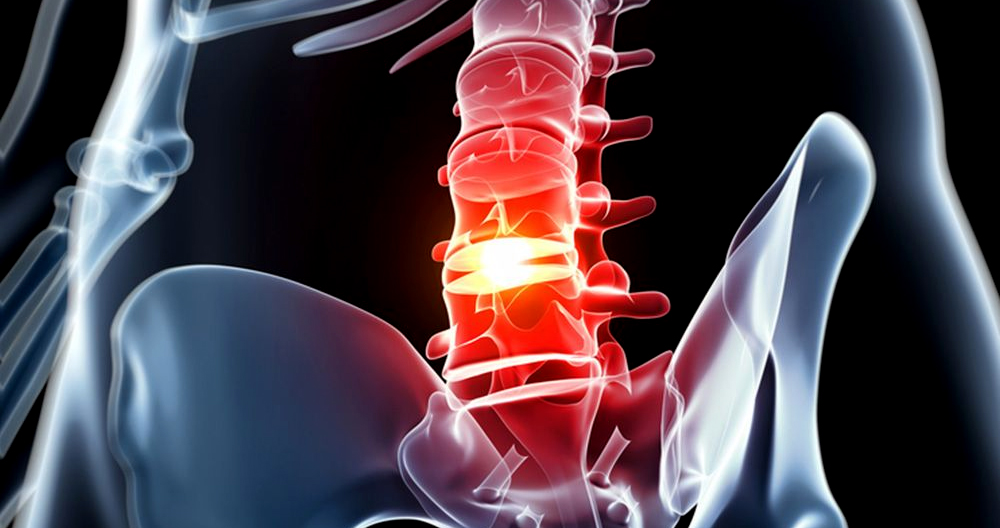
A herniated spine is an injury of the backbone (spine). Your spine is composed of many bones, called vertebrae. These bones reach from your base up to your tailbone. The discs, which are round cushions, sit between your vertebrae. These discs act like a buffer between your bones, allowing you to bend easily and move around. A herniated disc refers to a disc with a tear or leak.
Is herniated disc a common condition?
A herniated disc can affect as many as 2% of Americans each year. Herniated discs are the main cause of neck, arm, and/or back pains (sciatica). While herniated disks can occur anywhere along the spine, most often they are found in the neck and lower back. The herniated disc rarely occurs in the middle of your back.
Who is at highest risk for herniated discs
A herniated disc occurs most often in those between 30-50 years of age. This condition is twice more common in men than in women. Other risk factors include:
- Sitting still for long periods of time.
- Being overweight.
- Lifting heavy items.
- Repeated twisting, bending or turning in work, sport, or hobbies.
- Smoking.
Your doctor will examine you back to check for tenderness. Your doctor might ask that you lie down so they can determine what is causing your pain. Then, move your legs around.
A neurological exam may be performed by your doctor to assess your neurological health.
- Reflexes
- Muscle strength
- Walking ability
- Feel light touch, pinpricks and vibration
A history and physical examination are sufficient to diagnose a herniated spine. If you suspect that you may have another condition, your doctor might order additional tests to identify the nerves affected.
Imaging tests
- X-rays. Plain X Rays won’t reveal herniated discs, but can rule other causes like infection, tumors, or broken bones.
- CT scan. A CT scanner uses a combination Xrays taken in different directions to create cross sectional images showing the spine and surrounding structures.
- MRI. Radio waves and magnetic fields are used to create images that show the internal structure of the body. This test can be used to confirm the location of the herniated disk and to identify the nerves affected.
- Myelogram. Before a CT can be taken, a dye will be injected into your spinal fluid. This can be used for diagnosing conditions such as multiple herniated discs, pressure on the spine, or nerve damage.
Nerve tests
Electromyograms and nerve conduction studies measure the ability of nerve tissue to detect electrical impulses. This is used to identify nerve damage.
- Nerve conduction study. The electrodes are placed on skin to measure electrical nerve impulses. This study measures electrical impulses within nerve signals when a small current passes through the nerve.
- Electromyography (EMG) An EMG refers to a procedure where a doctor inserts a wire through the skin to different muscles. This test measures the electrical activity during contraction and rest.
How can I avoid a herniated disc
Unfortunately, it’s not always possible for a herniated disc to be prevented. There are ways to lower your chances of developing a herniated disc.
- Proper lifting techniques should be used. Avoid bending at your waist. Your back should be straight, while your knees should be bent. Use your leg muscles to support the load.
- Healthy weight is vital. A high weight can place pressure on the lower back.
- Good posture is crucial. How to improve your posture as you stand, move, stand, or sleep. Good posture reduces strain on your spine.
- Stretching. It is important to stretch if you are sitting for long periods.
- Avoid high-heeled footwear. High-heeled shoes can result in a slack back.
- Exercising regularly. Exercises that strengthen your abdominal and back muscles will support your spine.
- Stopping smoking. Smoking can make discs weaker, making them more vulnerable to bursting. Consider quitting smoking.
What are the chances for people with herniated discs?
The simple treatment of herniated disc pain is possible for as many as 90% of patients. Within a few weeks, you’ll feel better. You should consult your healthcare provider if you feel any worse. Some people may need surgery or spinal injections.
Are herniated discs going to get worse?
If justify untreated, herniated discs can get worse. This is especially true when the herniated disc continues growing, such as if it was caused work-related. Chronic ruptured discs can lead to pain, control loss, and sensation in the affected areas. You should consult your healthcare provider if symptoms persist for more than four to six months.


